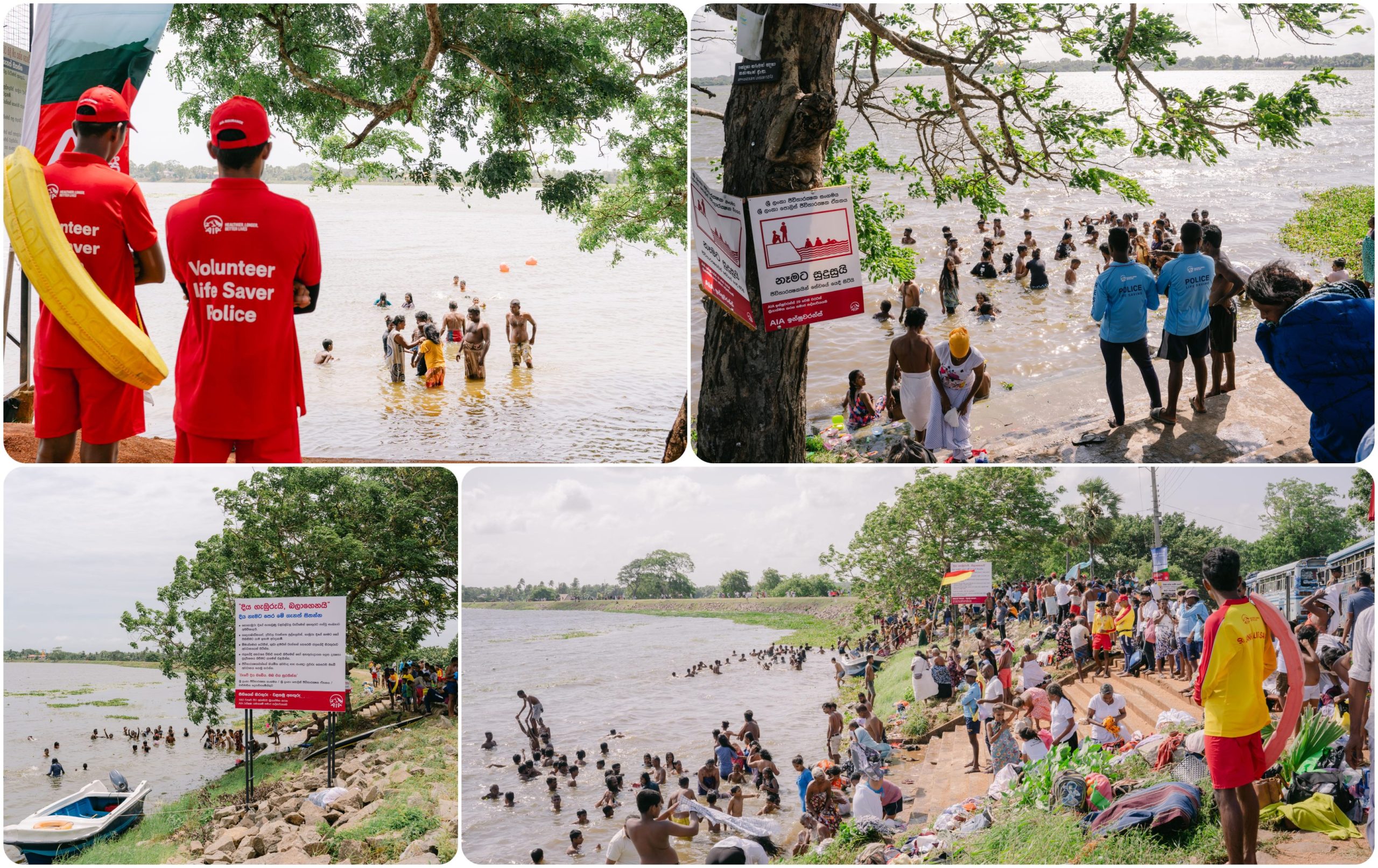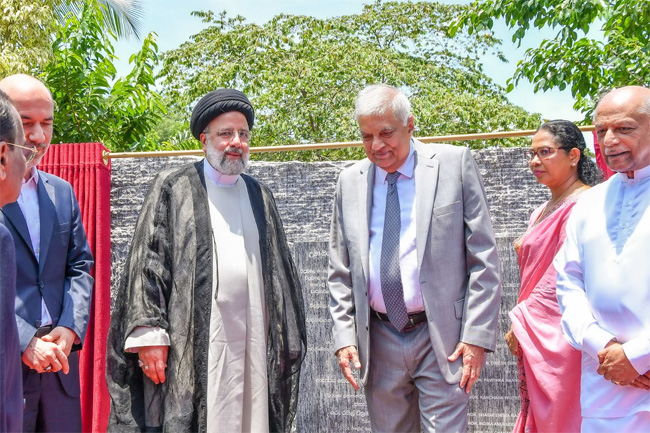Sri Lankan President Ranil Wickremesinghe and Iranian President Dr. Ebrahim Raisi jointly inaugurated the Uma Oya Multipurpose Development Project (UOMDP) on Wednesday (24).
Dr. Raisi arrived on the island nation on Wednesday morning via the Mattala International Airport, where he was accorded a warm welcome by Prime Minister Dinesh Gunawardena.
His visit comes after a special invitation extended by his Sri Lankan counterpart, marking the first visit of an Iranian President to Sri Lanka since former President Dr. Mahmoud Ahmadinejad’s visit in April 2008.
Shortly after his arrival, President Raisi participated in the public ceremony marking the inauguration of the UOMDP which aims to alleviate water scarcity in the southeastern dry region of the country by redirecting an annual average of 145 million cubic meters (MCM) of excess water from the Uma Oya basin to the Kirindi Oya basin.
Owing to this project, approximately 4,500 hectares of new land and 1,500 hectares of existing agricultural land in the Monaragala district will receive irrigation water, the government said in an earlier statement.
Moreover, the areas of Badulla, Monaragala, and Hambantota will benefit from 39 million cubic meters (MCM) of water for drinking and industrial purposes, while generating and adding 290 GWh of electrical energy annually to the National Grid.
Thanks to the UOMDP, approximately 4,500 hectares of new land and 1,500 hectares of existing agricultural land in the Monaragala District will receive irrigation water. Moreover, the areas of Badulla, Monaragala, and Hambantota will benefit from 39 million cubic meters (MCM) of water for drinking and industrial purposes, while generating and adding 290 GWh of electrical energy annually to the National Grid.
The project encompasses the construction of two reservoirs at Puhulpola and Dyraaba, a conveyance tunnel (Link Tunnel) spanning 3.98 kilometers to connect the two reservoirs, a 15.2-kilometer-long Head Race Tunnel, Surge Shaft, Pressure Shaft, Underground Powerhouse, Switchyard, Transmission line, Tailrace Tunnel, and related infrastructure.
Pursuant to a Memorandum of Understanding (MOU) executed between Sri Lanka and Iran on 27 November 2007, the Cabinet of Ministers had approved the execution of the contract agreement between the executing agency, Ministry of Irrigation and Water Management of Sri Lanka and Farab Energy and Water Projects (Farab Company) of Iran dated 28 April 2008 to implement the UOMDP by Farab Company, as an Engineering, Procurement and Construction (EPC) contract.
The total contract sums amount to USD 514 million and the contract became effective on 15 March 2010. Initially, the Export Development Bank of Iran (EDBI) funded USD 50 million until 2013. However, due to international sanctions on Iran, they were unable to continue providing funds for the project. Therefore, the Sri Lankan government decided to proceed with the project using government funds while continuing with the same contractor, Farab Company.
When UOMDP commenced on 15 March 2010, its scheduled completion date was 15 March 2015. However, due to various factors such as technical issues, particularly unexpected water ingress into the Headrace Tunnel (HRT), social impacts, financial challenges, and disruptions caused by the global Covid-19 pandemic during the construction period, the completion date has been extended to 31 March 2024.
Additionally, the overall duration of the project, including the defect and liability period, has been extended to 31 March 2025.
The project completed its commissioning phase in February and March 2024, successfully synchronizing Units 01 and 02 with the national grid. It then proceeded to complete its trial operations on 1 April 2024.
The UOMDP involves significant engineering challenges, particularly due to the 700-meter difference in height between Bandarawela and Wellawaya. Adjusting the tunnel route at such a height is a complex task. Additionally, the construction of a deep pressure shaft to channel water onto turbines is an unprecedented feat.
Following the completion of the UOMDP, the project components will be transferred to the operating authorities, namely the Ceylon Electricity Board (CEB) and the Mahaweli Authority of Sri Lanka (MASL). This transition will occur after the Ministry of Irrigation takes over the project components from the contractor.
Once electricity is generated, the water is directed through a tunnel to the Alikota Ara Reservoir, built across a tributary of the Kirindi Oya. From there, it is further diverted to the Handapanagala Reservoir, which has been expanded threefold as part of the project.
Additionally, water is channelled to the new Kuda Oya Reservoir, currently under construction on the right bank. These reservoirs facilitate irrigation in areas such as Wellawaya, Maharagama, Thanamalvila, and Balaharutha in the Monaragala District.
An irrigation system spanning over 60 meters in length is currently being constructed. It is anticipated that this system will supply irrigation water to 1,500 hectares of already cultivated land and an additional 4,500 hectares of newly developed land, supporting agricultural activities in both the Yala and Maha seasons.
The Uma Oya Downstream Development Project, facilitated directly by the Irrigation Department, is poised to alleviate the longstanding water scarcity issues in the Kirindi Oya Basin. Under the guidance of the government, officials have been directed to execute an integrated agricultural development initiative leveraging modern technology to optimize water utilization.
Additionally, the UOMDP has effectively addressed the challenge of supplying water for both domestic and industrial purposes in the Bandarawela and Wellawaya regions.



